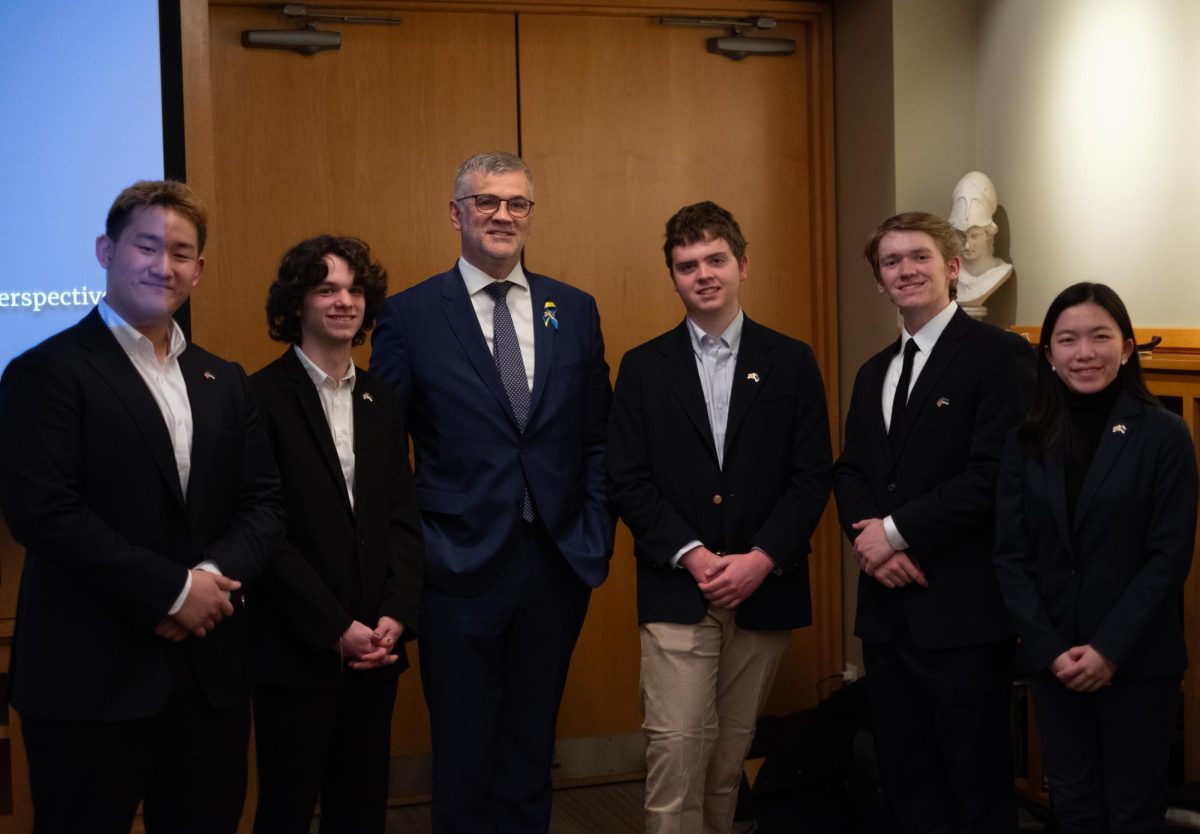Why are the walls here so empty? As I walk into the Libe, there it is. A yawning expanse of nothing but wall. Unadorned, unfulfilled and worst of all, boring. But this is not a problem of one or two buildings being unfurnished due to renovations. There appears to be a chronic aversion to any sort of chromatic deviancy within the walls of this institution. It is almost as though the buildings are made to be as lifeless as possible, the gray and white walls more reminiscent of asylums or prisons than a place for human beings to learn and thrive and connect.
My old highschool was built in the late 1800’s. It has been updated and renovated countless times, and is under construction to this day. It is built almost entirely of red brick — even the newer buildings — to tie it back to the old. But they ran into a problem. When you move around the halls and all you ever see is brick-red that expands as far as you can see down the corridor, you become fatigued. You get tired of seeing nothing but the same color that begins to engulf your entire vision and subtly weigh on your mind. It becomes the worst kind of visual noise, sapping away at your energy and connection with the place around you.
What do you do then? They could have chosen to ignore it, and leave it for the students to deal with. I don’t think anybody would have noticed if they did, a vague feeling of exhaustion and annoyance being the only indicator of something wrong. But they didn’t. They didn’t even have to do all that much, only utilizing the resources from work that their students were already doing. They went to the art department and found students who wanted to have their work displayed and let them have at it. So now, on every stairwell and on every wall hangs a piece of art made by someone who wanted the space to look a little nicer. Anything but the dead walls that choked the life out of that space.
There appears to be a lack of history here, which is strange for an institution like ours that has existed since 1866. 137 years of people that have been here before us, and who knows how many more will come after us. Yet what connects any of us? The closest thing that comes to mind is the donor plaques in Sayles and in the Weitz, but those are not much more than names with little humanity behind them. Who are the people behind the steel engravings? We don’t know. And is that all we should connect with, only the people who were lucky enough to have enough to donate and at a time when it was needed? What about everybody else who trod the same ground we now walk? As a student body, we do not see much of ourselves reflected in these spaces. We pass by without a trace, and leave nothing of ourselves here.
If we as students were to all disappear tomorrow, leaving nothing behind but the buildings we spend so much time in, would you be able to tell that people were ever here? Wouldn’t we be left with nothing but a bunch of flyers as an indication of the barest fingerprint left on these empty canvases?
There is such a vibrant community of artists and makers at this college. No matter how popular a degree Computer Science is, there will always be people who will express themselves through visual media. Discounting the major, how many people would try and leave their mark, even if they were not professionals. Maybe it wouldn’t stay up forever, but for a time there would be a part of campus that is undeniably yours, if even for a moment.
Was the art hanging on the walls of my highschool museum-quality by any stretch of the imagination? Absolutely not. The walls were home to contorted figures, gaudy colors and confusing perspectives. But that was never the point. In a way, that only increased their humanity. You could walk by and know that someone just like you had once passed by and left a piece of themselves here for you. And I think that connection is valuable, much more valuable than the cleanliness of the walls that offer nothing but expansive nothingness
So what do we do about it? A good first step is becoming conscious of the emptiness of the spaces around us and how it makes us feel. Maybe that sense of sterility is desirable in buildings like Anderson where students go to perform precise acts of science. But why should that be the case in LDC, the residential buildings or the Libe? Think about what it would look like if there was something, anything, present on the walls. Would it improve how you feel, wandering around those spaces? What would you want to see up there, for everyone else to see? Perhaps if we begin to see the absences present in our environments, we can begin to conceptualize and shape this place in ways that make us want to actually be here, present in the moment and not ghosts, leaving no touch upon where we move.










